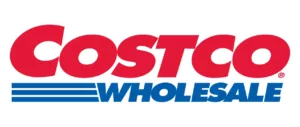I still remember my first kitchen shift as a teen: new apron, new shoes, and a manager who pointed to a sign-in sheet and said, “Bring your food handler card tomorrow.”
I spoke conversational Spanish, and two coworkers spoke only Spanish, so I helped them find a course that actually made sense in their language.
That little scramble shaped how I think about training today: people work hard, time is tight, and the right class should help you pass quickly without confusing fine print.
Whether you’re a first-time employee, a returning seasonal worker, or a manager helping a Spanish-speaking team, this guide shows exactly how to pick a fast, approved food handlers certificate in Spanish—plus the small details that save hours later.
If you’ve been searching for a Food Handler’s Training Course (Spanish), you’ll find a clear, practical path below.
Quick Answer: Yes, You Can Finish the Spanish Course Online—Often in One Sitting
Most states and counties accept an approved online course that includes a printable certificate and a wallet card, which you can show on the job.
A well-built Spanish option allows you to study on your phone, take a short exam, and download proof immediately.
Look for an approval badge (state, county, or ANSI/ANAB, depending on local regulations) and Spanish support from the first click to the final certificate.
What a Solid Spanish Training Experience Looks Like From Start to Finish
A strong food handler certification en español feels Spanish from the first click to the final screen. The entire course—lessons, menus, and the exam—is presented in Spanish, with audio narration available for workers who prefer to listen while reviewing key points.
Modules are mobile-friendly and remember where you left off, allowing you to pause during preparation and resume later without losing progress.
Along the way, short practice checks mirror the style and difficulty of the final exam, turning study time into rehearsal.
When you pass, you should be able to download your certificate instantly and also receive a wallet-size proof—many employers refer to it as a “card,” so it helps if the provider clearly offers a food handlers card in Spanish format.
If test nerves strike, free or low-cost retakes keep the process low-stress. And when something goes sideways, real support in Spanish—via chat, email, or phone—gets you unstuck quickly.
What “Spanish-Friendly” Actually Means in Practice
“Spanish-friendly” isn’t just subtitles. It means the course title, buttons, error messages, and help articles all display in Spanish so learners never have to switch languages midstream.
Native-level professionals write exam questions—no clumsy translations that confuse key terms. Certificates print with the Spanish course name, and if your county checks course codes, the paperwork matches what inspectors expect.
As a quick litmus test, look for a clearly labeled Food Handler’s Training Course (Spanish) from the provider; that’s a strong signal you’re in the right place.
Time and Cost Expectations
Most workers complete the task in about one to two hours, depending on their reading pace and the size of their device. Pricing varies by state and provider; budget for a modest single fee and confirm whether reprints or retakes incur additional costs. Group orders sometimes offer a lower per-person rate for managers training a team.
Where to Earn It: Reliable Spanish Options That Pass Employer Checks
You’ll usually see three buckets of providers:
- National providers with approvals across many states/counties. They often hold ANSI/ANAB accreditation, which is accepted, as well as individual state approvals where required.
- State or county health department portals. Some jurisdictions host their own courses or list approved vendors (many of which include Spanish).
- Employer-led group training. A manager purchases a batch of seats for staff, often combining English and Spanish enrollments on a single dashboard.
A Quick Checklist to Pick the Right Spanish Course (and Avoid Repeat Work)
Choosing a provider shouldn’t feel like a gamble. Your goal is a course that workers can complete on standard devices, produce proof you can trust, and pass local acceptance without requiring back-and-forth communication.
Use this checklist to confirm the essentials upfront, so you only train once—and maintain clean records for inspectors and HR.
- Local approval: Does your state/county accept the provider’s credentials? Look for a clear “Approved in [Your State/County]” line or an ANSI/ANAB badge if your jurisdiction accepts it.
- Spanish from start to finish: Course, quiz, and final exam are all Spanish—no last-minute switch to English.
- Instant documents: Immediate PDF certificate and a printable wallet card in Spanish.
- Retake policy: Friendly retakes calm test anxiety and support learners who read slowly on a phone.
- Support: Live chat or phone assistance in Spanish, available during standard working hours.
- Accessibility: Audio narration, readable text, and large tap targets on mobile.
- Data retention: Easy re-download if the certificate gets lost or a manager needs a copy.
- Manager tools (if needed): Seat management, progress tracking, and a Spanish/English mix in one roster.
If a provider ticks these boxes, you’re on track for a smooth food handler certification in Spanish.
How Fast Can a Spanish Learner Finish? A Realistic Timeline
Most learners can wrap this up in a single sitting, especially if they plan a quiet window and use audio with earbuds.
The timeline below sets clear expectations for crews juggling shifts and family time—short bursts, quick checks, and immediate proof at the end.
- 5 minutes: Create an account, select the Spanish food handling course in Spanish, and confirm your state/county.
- 45–90 minutes: Learn core topics—cross-contamination, time/temperature, allergens, cleaning/sanitizing, and personal hygiene.
- 10–20 minutes: Take the exam (Spanish). If you miss the cut score, retake after a quick review.
- Download the certificate and wallet card (Spanish) as soon as possible. Please email it to a manager or save it to your phone for later reference.
Tip: Turn on audio in Spanish and use wired or wireless earbuds. Learners who listen while scanning the screen often move faster without missing key points.
For Managers: Launching a Spanish Track for Your Team This Week
If you run a kitchen, cafeteria, or food truck fleet and you’re always onboarding, set up a lightweight system that supports Spanish and English side by side.
Step-by-step
- Confirm local rules. Some counties require a specific vendor; others accept any ANSI/ANAB food handler card.
- Pick a provider with bilingual rosters. You want English and Spanish courses to be available in the same manager dashboard.
- Create a sign-up QR code. Post it near the time clock with a short Spanish blurb: “Comience aquí. Curso de manipulador de alimentos en español.”
- Schedule weekly onboarding blocks. 45–60 minutes of quiet time with loaner tablets helps new hires complete their tasks on their first day.
- Collect certificates automatically. Require learners to upload PDFs to a shared folder or let the provider’s dashboard track completions.
- Refresh before expiration. Most cards renew every 2–3 years (check your jurisdiction). Set reminders 60 days out.
This light structure reduces scrambling, prevents lost paperwork, and sets a calm tone for new staff.
Common Mistakes That Slow Spanish Learners (and How to Avoid Them)
- Paying for a course your county doesn’t accept. Always check the approval notice for your location first.
- Choosing a “Spanish-labeled” class that flips to English on the exam. Read the fine print or sample a demo.
- Using a tiny phone with bad Wi-Fi. Use a tablet or a stable desktop connection for the test.
- Skipping practice checks. Quick knowledge checks mirror exam style and build confidence.
- Waiting until inspection day. Complete training during onboarding so everyone’s card is ready.
Real-World Snapshots (Names Changed)
- Rosa—hotel kitchen: Rosa speaks fluent Spanish and basic English. She completed a food handler’s card in Spanish on her phone during a quiet morning, printed the card at the front desk, and added the PDF to the HR files.
- Miguel—food truck owner: Miguel trains seasonal crews. He buys a bundle with Spanish seats each spring, texts the enrollment link, and keeps certificates in a single cloud folder.
- Lucía—school cafeteria: Lucía asked her director for Spanish audio. The provider’s narration helped a colleague finish on time after struggling with text-only lessons.
A Simple Action Plan You Can Start Today
Start by searching for a Food Handler’s Certificate course, including your state or county name, so you only see options that match local rules.
From those results, open the Spanish-specific course pages and confirm approval—look for an explicit “Approved in [Your State/County]” note or the credential your jurisdiction accepts.
Ensure the proof you receive is truly in Spanish by verifying that both the final certificate and the wallet card are printed in Spanish, not just the course content. Review the retake policy and confirm that there’s real support available in Spanish (via chat, email, or phone) in case you get stuck.
Once everything checks out, enroll, complete the course at your own pace, pass the exam, and download your food handler’s certificate in Spanish. Save the PDF to your phone, grab the wallet card, and share a copy with your manager.
Extra Tips for a Smooth Learning Session (Spanish or Bilingual Teams)
Set yourself up as you would for a short shift: pick a quiet corner, connect to a stable Wi-Fi network, and plug in a charger so you’re not racing against the battery.
Turn on Spanish audio narration; listening while you scan the screen makes tricky terms easier to understand. If your shift gets busy, pause between lessons rather than during a quiz, so you don’t lose progress.
Keep a small notepad handy to jot down essentials—such as time/temperature, danger-zone numbers, sanitizer concentrations, and key allergen rules—so they stay with you.
When you finish, save your certificate twice: download it to your phone and email a copy to yourself or your manager. That way, it’s ready for posting, audits, or quick verification on the line.
Why the Right Spanish Course Matters for Safety—and for Careers
Food safety isn’t just about passing a test. Proper Spanish training helps workers handle allergens correctly, maintain the temperature of hot and cold foods, and clean surfaces that can spread illness. When a course speaks your language clearly, you remember more and feel ready on day one. That confidence is evident in more thorough line checks, smoother inspections, and fewer headaches for managers.
Take Action Today
Ready to get certified without the guesswork? Choose a provider that offers a clearly labeled food handlers certificate in Spanish, fast online testing, and instant Spanish paperwork.
If you’re a manager, set up a bilingual roster so new hires can complete training during onboarding. Take short steps today to prevent repeat work tomorrow—and help your team serve safe food with pride.


















